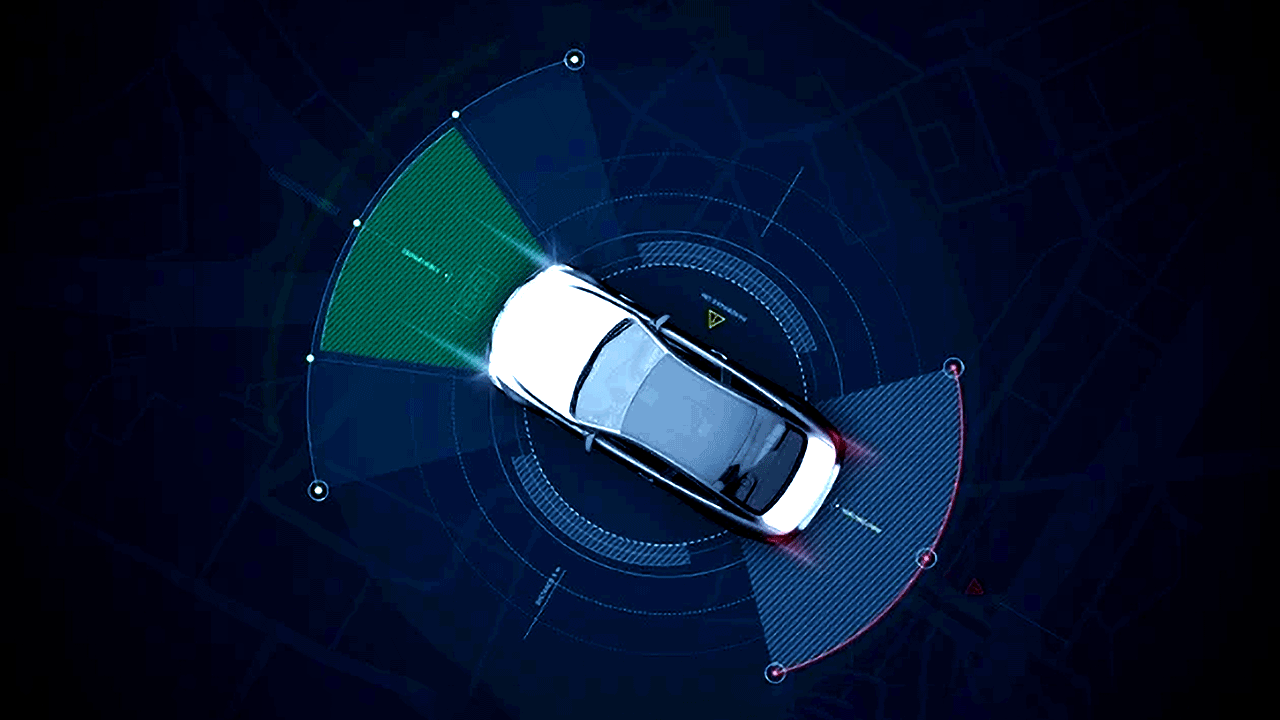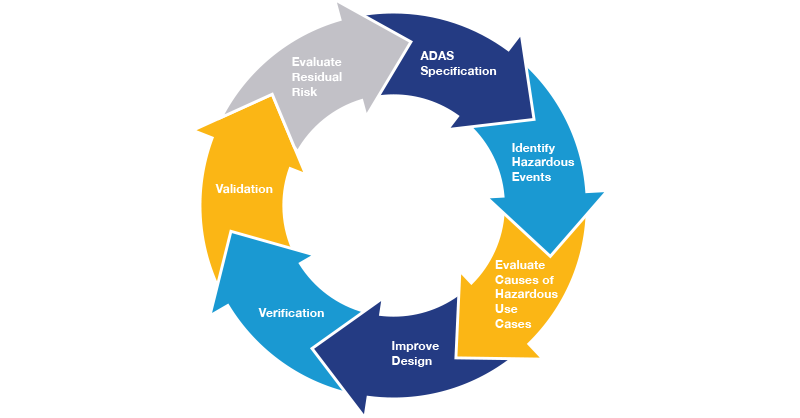SME Interview: How to Achieve Functional Safety Success with LHP and NI
-An Interview with Steve Neemeh From LHP Engineering Solutions
10 min read
 Marty Muse
:
Feb 26, 2021 2:36:54 PM
Marty Muse
:
Feb 26, 2021 2:36:54 PM

Table of Contents
Recently, I had the opportunity to sit down with Steve Neemeh, Chief Technology Officer, to discuss ADAS technology and how it’s used in today’s modern technology with regards to transportation and mobility. We’re hearing an awful lot about it. For those of you in the consumer world, who have recently purchased a car or truck, you've probably been sold on some of those ADAS features. We are going to talk about what that really means, how it's changing our lives, and the way in which LHP plays into that and delivers on that value.
Watch the full interview now or read our transcribed blog below, I hope you find this information helpful!
ADAS is an acronym. It stands for Advanced Driver Assistance System. I think there’s a distinction between regular driver assist systems and advanced ones. I think that when we get to advanced driver assistance systems, we are considering things outside the vehicle and outside the driver themselves, such as the environment. And we’re trying to provide what could be considered an additional safety feature to help the driver.
You know, if you go back in time, there’s a very old example of a driver assist system called “cruise control.” It’s been around a very long time to help drivers. Then, moving forward we see anti-lock brakes, and today a slew of new ADAS design.
Well, if you go to the dealership today, you’ll find many different types of sensors and packages you can find, and cruise control has moved on to adaptive cruise control. So, you used to be able to set the speed and the vehicle would remain going at the speed you set it at. Now, it still remains on the speed you set it at, but it also keeps you away from the car in front of you.
Some more examples include parking sense – automatic parking – like in the commercials where cars park themselves. There are also blind spot detectors, backup cameras, front cameras, and traction control. Some Jeeps and similar vehicles have terrain adjusters, which will adjust for the terrain accordingly. You have the adjuster suspensions for that, and all of that is advanced driver assistance of some kind.
Well, sensors are added to the car, right? So, if we take the Cruise Control Center, it adds some kind of sensor in the front radar, or other proximity type sensors. And they detect vehicles and then they actually throttle back or brake for you. So, some of the advanced systems are actually moving the vehicle for you.
The original ones were really dependent on you making the movements themselves. But these newer ones will nudge the steering wheel for you, right? The first time that happened to me, also, I was quite surprised. Then if you try to, for example, take a lane to the right, but don't signal, the vehicle's thinking about it, it's saying: Well, why are you, drifting? I'm detecting the lane. You are drifting. But in fact, I'm just making a lazy lane shift. And then you'll feel the steering wheel pull you back. So, its sensors which are now directly tied into steering, braking,
and acceleration, so trying to somewhat take control of the vehicle for you, or at least adjust it for you. And an indication of things like the automatic parking, you'll pull up, it will actually drive it into the parking spot.
Yeah. So, there's a parking sense. The proximity sensors that, if you go around the bumper, you'll see these little round sensors. And the different original equipment manufacturers (OEMs) use different sensors. There's actually a huge argument right now between Tesla and Waymo about lidar versus radar – there are really actually big discussions going on right now about what sensors will take you to full autonomy. But just on the parking sense, you go around the vehicle. You'll look at the bumpers. And you'll see these little round dots. And they're actually pushing out. They're basically sensing the environment and checking the distance – the distance of you to the garbage can in front of you to the person behind you. Then it triggers on your dashboard, like a light. It will trigger a yellow light. On the car I have, basically a red light will tell me that I'm a foot away, yellow light will be about 2 feet away, and that sensor is what's giving the main controllers that information. Now, how accurate and good they are is really what's in question there.
That’s actually a very complicated question. You probably have to be a lawyer to go through the exact implications here. A lot of it right now is in the control of the manufacturers themselves. So, there’s a liability – a basic liability. You're putting out products for the consumer, and they're taking responsibility for that. I think if you look online, you'll find some lawsuits pertaining to ADAS. Now, the National Highway Traffic Safety Administration (NHTSA) puts the requirements out there to put a vehicle on the road, right? So that they actually have things like windshield wiper requirements. So, for low speed, high speed, they have dashboard lights requirements because you don't want the dashboard to blind you. All those things are things you have to test for. Now, they're starting to put those out for ADAS. In fact, if you look at the GROW AMERICA Act back in 2015, there was actually an article in there, a part that was enabling NHTSA to empower functional safety, right? To give them the power to govern true
functional safety. Now, GROW AMERICA Act didn't pass, interestingly. But it tells you, eventually, that's going to make it in. So, that was the Obama administration. We've got Obama kind of to point out, we have a VP right here now, as the president from that administration, that actually put out those regulations. I anticipate that NHTSA, or a combination of NHTSA that North America will actually end up governing.
But right now, it's somewhat open. There is, there are requirements to test these things, but they're still pretty fundamental. They're pretty foundational, like, okay, well the car does stay away from the car in front of you, but the case you gave me, I don't think it's testable. And another part, I would say is that there are European Governing Agencies and Chinese. Each of them has their own perspective and their own structure. So, there, I don't think there's a global controller of this.
So, V&V stands for Verification and Validation. And then you take any safety-critical product in any industry. There's a foundational process you follow, to ensure that product is good, right? And that it meets the intent that it was developed for. And that V&V process, I think, differs from manufacturer to manufacturer. They all use their own criteria, I believe, based on what I've witnessed.
We believe far more stringent criteria is required, and one where not only do you take it on the road to test, but a combination of simulation, hardware in the loop, and also just the methodical systems-based approach from the top down to ensure the cases you gave earlier.
Right? The case you gave earlier is actually covered, or in another case, no backup camera where it rains. I've had that scenario in a blinding. And the other aspect that you mentioned, that triggers a thought, is that the human behavior change?
You know, I'm actually training my daughter to drive, and she just decides to use the backup camera. That backup camera better be rock solid. Right? Because there are many cases if she starts using the backup camera without looking behind her. It better provide the same peripheral view. Now, when you add these ADAS features, you're impacting human behavior, and you're training humans to use the vehicle in a different way. And so, it actually kind of makes the verification and validation even more complex because the human behaviors change.
So, we believe a more formal process, one where criteria are defined and validated, not only on the road, which is virtually impossible for all cases, but also in the lab, with automated equipment.
Sure. So, ADAS is just the beginning of autonomous vehicles. So the consumers are going to accept that, and that creates some sort of consumer acceptance of autonomous vehicles. And I think that if you had one today, a large percentage of the population wouldn't drive. But what we're doing now is adding these assist features that are slowly taking the decision making away from the hands of the driver, like the adaptive cruise control. I have to brake now. When you're on the freeway, great, you took that away from the grid. And then let's think about the lane keeping assist that was mentioned earlier and adaptive cruise control together.
Isn't autonomous driving on the freeway just making sure you don't hit the car in front of you and keeping the length? So, those two features together, but with a little more complexity, give you autonomous driving on the freeway.
There's an article out there, just recently, Elon Musk and the Head of Waymo are actually in an argument. And it's like, is the progression of ADAS the future of autonomy, or is it an entirely more complex situation of awareness? You know, like, is being aware with AI of your environment, the future of autonomy? That's a very interesting debate, and it's online, so you can read about that. But I think the answer is Yes to both, ultimately. I think there are
more complicated ADAS systems will eventually lead to, for example, the freeway being jammed up. You can just press a button and be comfortable with it. But, when it comes to the construction zone, the dog park, the school zone, I don't think that ADAS is enough. That's not enough.
Then the other part of its decision, especially on the verification and validation, which we mentioned earlier. Statistically, there are so many combinations of potential problems that it's almost a guarantee of carnage if you don't do this correctly, right? Because planes are one thing, planes have direct routes and they control those routes. So, they're not worried about interference from anything other than planes and birds. Right? But I call it, you know? Like the number of permutations and combinations are infinite. And you don't reach back, functional safety tells you, you have to address random failures through statistical analysis of your components. It's a part of that.
I think that's how it plays in. It grows over its complexity, but there needs to be another level of awareness to really be autonomous.
ADAS is called a bunch of different things in different industries. In the rail industry, there's a whole industry on positive train control. And interoperability of the trains and detecting each other and where they are, is a big part of that. That's your mover on the on the rail side of things. There are the personal taxis, personal flying taxis, that is a whole other industry, which kind of really hasn't taken off just yet, But it's definitely in full development. Delivery of packages. You know, there's an Amazon Scout, they're talking about like a small robot that will deliver packages to you. We'll want to avoid a lot of things, but some of those things are pure autonomous. And in the automotive industry, it's the driver we're trying to actually replace and keep safe.
So that started as begun – it's evolving, but I think every transport industry has a stake here. You know? Autopilot has been around for a long time. Planes can land themselves, but the FAA doesn't allow it. That planes can land themselves, you know, they can definitely land themselves. So, those are the kinds of things that have happened in the transport industry.
Foundationally, functional safety wants to avoid harm. And I'm thinking of that, you know, one specifically, which is ISO 26262. But it's written around the safety of a driver. So…you start by identifying hazards, and then you go through a methodical process to ensure those hazards
don't occur; that harm to the humans doesn't occur. Think of the example we had before, of the car that pulls in, in front of you. There's a hazard right there that's been created, and the
hazard is: the vehicle will brake hard, and you'll get slammed into by the guy behind you. It's completely an unexpected event. There's another hazard I have to include, which is the automatic emergency brake. So, I have actually, a real-case scenario, driving, on a mountain,
making a very sharp, 180-degree turn. The automatic emergency brake detected the mountain as another car and slammed the brakes. Right? Because it thought there was a car in front of you, but it happened to be the mountain on a really sharp turn. Those are hazards that have to be addressed, and they have to be addressed through a design process, and the statistical analysis, and the verification and validation that go with it. If they're not, then all of those features are not safety features. They're toys. They're up-charged – they are things that you add to a vehicle to make it fancier. But they're not safety features. Although, if you walk into a dealership today, “safety sensors” are all over the place. That word, I've read three, four times, safety sense, safety features, safety system. But unless you put in the analysis that you've protected against those hazards, and you've validated that – and I'm not just talking about on a 25- or 15-degree day on a sunny day at lunch – I’m talking about in the rain or snow. Under the conditions where there's mud on the sensors, and factoring in the human behavior. Unless you've done all that, they're not really safety features, as far as I'm concerned. And that's the clash between functional safety and autonomous and ADAS.
Even the Lidar/ Radar one, it's anyone's guess, you know, because the sensors themselves are really important in this solution. If they're low-quality sensors, you can have ten of them if you want. They're low quality, so you can't even compare them. You can't, it doesn't add to the redundancy. It doesn't add to the fidelity, right? So, really expensive sensor sets, you know, like military-grade, aerospace-grade, would make the car astronomically expensive. So, I think there's still ADAS technology to be developed, there's still an undefined future.
But I don't think it's fly by night. So, I'm actually personally looking for a vehicle right now for my daughter to drive that has the automatic emergency brake because in that particular case, she's not going to the mountains. She is driving on the freeway. I wouldn't mind to have something to stop her from ramming into the guy in front of her when she's not paying attention. As someone who kind of really lives by the safety space, I still want these features; I want them to be successful, and I think I'm not the only one.
I actually also know that plenty of elderly and disabled are unable to drive, either due to something like the stress of an LA freeway, which is really difficult to drive in, for example, or plenty of other reasons, are wanting autonomous driving. They want to be able to press that button, you know? So, it'll improve the lives of countless people. And I think, it's here to stay. And it's going to evolve into just a more mature industry and more, you know, robust industry, and I think regulated industry.
 Steve joined LHP in 2015 to lead the expansion of the west coast operations. He is the leader of the strategy and solutions architects as well as president of the delivery consulting organization. Steve has over 25 years of Functional Safety experience prior to joining LHP. Steve has launched multiple start-up operations and has taken them to full production. Notably, a complete ground up electronics and software development group to service commercial aerospace electronics and military vehicle power electronics. For LHP, Steve pioneered the implementation of safety critical applications in California, launching functional safety for autonomous driving applications as well as air mobility.
Steve joined LHP in 2015 to lead the expansion of the west coast operations. He is the leader of the strategy and solutions architects as well as president of the delivery consulting organization. Steve has over 25 years of Functional Safety experience prior to joining LHP. Steve has launched multiple start-up operations and has taken them to full production. Notably, a complete ground up electronics and software development group to service commercial aerospace electronics and military vehicle power electronics. For LHP, Steve pioneered the implementation of safety critical applications in California, launching functional safety for autonomous driving applications as well as air mobility.

-An Interview with Steve Neemeh From LHP Engineering Solutions

An Introduction to Verification and Validation Testing for ADAS

How to Design Safety Into ADAS Products